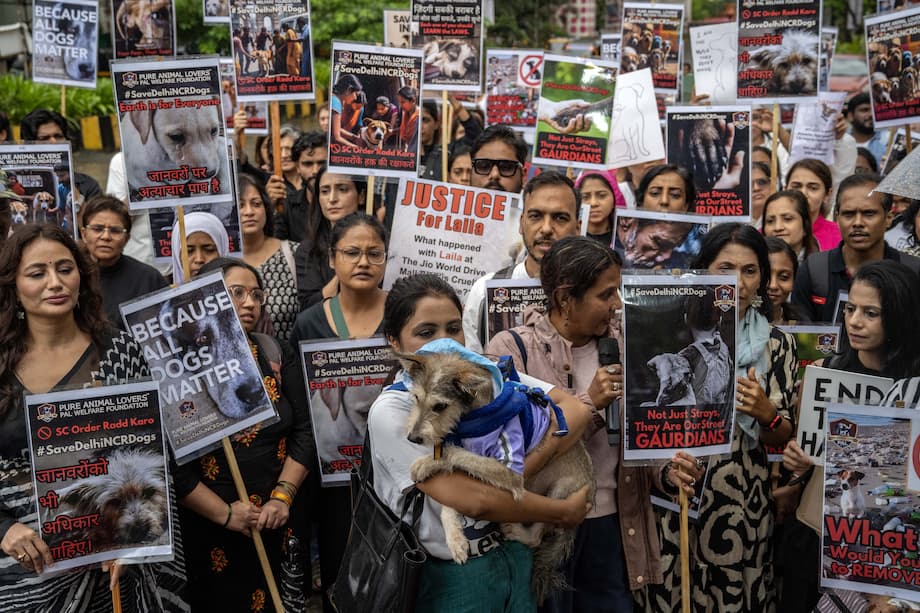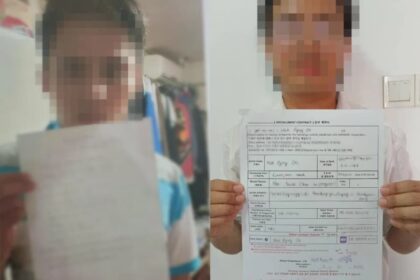India’s Stray Dog Crisis: Supreme Court’s Controversial Order and Its Reversal
In August 2025, India’s Supreme Court ignited a nationwide debate by ordering the removal of all stray dogs from the streets of New Delhi and its surrounding suburbs. The directive, prompted by a surge in dog bite incidents and rabies cases, mandated that nearly one million stray dogs be rounded up and permanently confined to shelters within eight weeks. The move, intended to address public safety concerns, quickly became one of the most contentious legal interventions in recent memory, exposing deep divisions over animal welfare, urban management, and the limits of judicial power in India.
- India’s Stray Dog Crisis: Supreme Court’s Controversial Order and Its Reversal
- What Prompted the Supreme Court’s Initial Order?
- Public Outcry and the Limits of Implementation
- The Supreme Court’s Reversal: A New, Compassionate Directive
- Challenges Ahead: Implementation and Public Safety
- Broader Implications: Law, Society, and the Role of the Courts
- Community Voices: On the Front Lines of Compassion
- In Summary
For years, Delhi’s stray dogs—often called “indies”—have been a familiar part of the city’s landscape. Many residents feed and care for these animals, forming bonds that blur the line between pet and community member. Yet, the risks are real: India accounts for 36% of the world’s rabies deaths, and New Delhi alone sees thousands of dog bite cases each month. The Supreme Court’s initial order, while aiming to protect citizens, clashed with both practical realities and the country’s longstanding legal framework for animal welfare.
What Prompted the Supreme Court’s Initial Order?
The catalyst for the court’s intervention was a series of high-profile dog attacks, including fatal maulings of children that shocked the nation. In July 2025, the death of a six-year-old girl from rabies in Delhi set off a wave of grief and outrage. The Supreme Court, acting on its own initiative—a practice known as suo motu action—declared that existing measures for managing the city’s stray dog population were inadequate. The justices ordered all strays to be captured and detained in shelters, overriding the Animal Birth Control (ABC) Rules, which require that healthy stray dogs be sterilized, vaccinated, and returned to their original locations.
This abrupt shift was justified by the court as a necessary response to a public health emergency. As one judge reportedly said,
“For the time being, forget the rules and face reality.”
The court’s language and the short compliance deadline—eight weeks to build and staff enough shelters for up to a million dogs—sparked immediate concern among animal welfare advocates, municipal authorities, and ordinary citizens alike.
Public Outcry and the Limits of Implementation
The backlash was swift and widespread. Animal rights groups, veterinarians, politicians, and celebrities condemned the order as unworkable and inhumane. Delhi has only about 20 animal shelters, most already overcrowded and underfunded. Activists warned that mass confinement would cause immense suffering, risk disease outbreaks, and ultimately fail to control the stray population. The city’s infrastructure simply could not accommodate such a massive influx of animals.
Himanshi Varma, a longtime community dog feeder in New Delhi, described the panic that swept through animal lovers:
“There’s no count and there’s no end. How can we possibly care for so many if they’re all locked away?”
Similar sentiments were echoed by shelter operators like Meenakshi Bareja, who noted that even well-run facilities struggle to meet the needs of the animals already in their care.
Legal experts also questioned the court’s authority to override established law. The ABC Rules, rooted in scientific consensus and international best practices, prohibit the euthanasia of healthy strays and mandate their return to familiar environments after sterilization and vaccination. Critics argued that the court was venturing into legislative territory, creating policy rather than interpreting existing statutes.
The public debate quickly spilled onto the streets and social media. Protests erupted in cities like Mumbai and Bengaluru, with demonstrators demanding a more humane approach. Politicians, including opposition leader Rahul Gandhi, weighed in, calling the order a step backward from science-based policy. Animal welfare organizations filed legal challenges, and the issue dominated headlines across India and abroad.
The Supreme Court’s Reversal: A New, Compassionate Directive
Faced with mounting criticism and practical obstacles, the Supreme Court convened a special three-judge bench to review its earlier decision. On August 22, 2025, the court issued a revised order that fundamentally changed the approach to stray dog management in Delhi and, by extension, the rest of India.
The new directive stipulates that stray dogs picked up by authorities must be sterilized, vaccinated, and dewormed, then released back to the same areas from which they were taken. Only dogs exhibiting aggressive behavior or infected with rabies are to be confined in shelters. The court also banned public feeding of stray dogs in open spaces, instead requiring municipal authorities to establish designated feeding zones in every ward. Violators of these rules face legal action, and municipalities must set up helplines for reporting infractions.
This reversal was widely welcomed by animal welfare groups, veterinarians, and many members of the public. Alokparna Sengupta, director of Humane World for Animals India, called it
“balanced, structured, and compassionate.”
The revised order aligns with the ABC Rules and international best practices, reaffirming that humane population control—through sterilization and vaccination—is the only sustainable solution.
Why the Change? Legal and Practical Realities
The court’s new stance reflects a recognition of both legal constraints and on-the-ground realities. The ABC Rules, updated in 2023, are based on scientific evidence showing that mass removal or culling of strays is ineffective and often counterproductive. When dogs are removed from an area, others quickly move in to fill the ecological niche, leading to a never-ending cycle of capture and replacement. Sterilization and vaccination, by contrast, gradually reduce the population and the risk of disease.
Moreover, the revised order acknowledges the deep cultural and social bonds between communities and their street dogs. In many Indian neighborhoods, residents feed and care for local strays, who in turn provide companionship and even a measure of security. As The Guardian noted, Delhi’s “indies” are valued for their resilience and have become an integral part of the city’s daily life.
Challenges Ahead: Implementation and Public Safety
While the Supreme Court’s revised order has been hailed as a victory for compassion, significant challenges remain. India is home to an estimated 62 million stray dogs, with Delhi alone accounting for up to one million. The scale of the problem is daunting, and effective implementation of sterilization and vaccination programs requires substantial resources, coordination, and public cooperation.
Municipal authorities have been criticized for inadequate enforcement and funding of the ABC program. Shelters are often overcrowded, underfunded, and pose health risks to both animals and humans. NGOs and community volunteers, like Himanshi Varma, play a crucial role in filling the gaps, but they are stretched thin. The court’s order that animal lovers and NGOs deposit funds to strengthen infrastructure is a recognition of this reality, but questions remain about accountability and oversight.
Public safety concerns also persist. India’s high rate of rabies deaths—driven largely by dog bites—underscores the need for robust vaccination campaigns and public education. The court has called for clear criteria, based on scientific data, to identify aggressive dogs and prevent misuse of the order to justify arbitrary killings or indefinite confinement. Legal experts warn that the vague definition of “aggressive” could lead to abuse, and activists stress the importance of transparency and due process.
Designated Feeding Zones: A Practical Solution?
One of the court’s most notable directives is the creation of designated feeding zones for stray dogs. The aim is to balance the needs of animal lovers with public health and safety concerns, reducing conflicts between feeders and residents who fear dog attacks. However, critics argue that these zones are difficult to manage and may not be accessible to all community dogs, especially in sprawling urban areas.
Successful implementation will require close collaboration between municipal authorities, NGOs, and local communities. Public awareness campaigns, clear signage, and regular monitoring will be essential to ensure that feeding zones serve their intended purpose without creating new problems.
Broader Implications: Law, Society, and the Role of the Courts
The Supreme Court’s handling of the stray dog issue highlights broader questions about the role of the judiciary in shaping public policy. While the court has a history of intervening in matters of public interest—from environmental regulation to urban planning—critics caution against overreach. As legal scholar Nishaank Mattoo observed,
“The Supreme Court has ventured into the realm of legislation, which is not within its scope of powers.”
Others argue that judicial activism is sometimes necessary when legislative and executive branches fail to act.
The debate over stray dogs also reflects deeper societal attitudes toward the vulnerable—both human and animal. The controversy has exposed tensions between compassion and pragmatism, between individual rights and collective safety, and between tradition and modernity. As The Independent noted, the way India manages its stray dog population is a mirror of how it treats the marginalized more broadly.
Ultimately, the Supreme Court’s revised order seeks to strike a balance between protecting citizens and ensuring humane treatment of animals. The case has been expanded nationwide, with the court taking up similar cases from other states to formulate a uniform policy. Authorities have been directed to submit affidavits detailing available resources, and animal lovers are encouraged to adopt strays, who must then be tagged and permanently housed.
Community Voices: On the Front Lines of Compassion
For caregivers like Himanshi Varma, the focus remains on practical action: feeding, vaccinating, and sterilizing the dogs she calls her “kids.” Despite the legal and bureaucratic complexities, her daily acts of kindness embody the spirit of the revised order. As she told CNN,
“All that matters is that our kids’ stomachs are filled up. They should be treated, vaccinated, and sterilized.”
Veterinarians like Dr. Sarungbam Yaiphabi Devi, who runs a small sterilization unit in Delhi, echo the need for compassion and realism.
“The order was very unexpected. Also unwarranted and impractical,”
she said of the initial directive. The revised order, she believes, is a step in the right direction, but much work remains to be done.
Animal welfare organizations, including PETA India and the Humane World for Animals, have pledged to monitor the implementation of the court’s order and advocate for further reforms. They call for greater investment in sterilization and vaccination programs, stronger enforcement of existing laws, and increased public education to reduce fear and promote coexistence.
In Summary
- India’s Supreme Court initially ordered all stray dogs in Delhi to be rounded up and confined to shelters, sparking widespread outcry.
- The order was reversed after protests, with the court now requiring sterilization, vaccination, and return of healthy strays to their original locations.
- Only aggressive or rabid dogs are to be confined, and public feeding is banned except in designated zones.
- The revised order aligns with scientific best practices and the Animal Birth Control Rules, emphasizing humane population control.
- Implementation challenges remain due to limited resources, vague definitions, and the sheer scale of India’s stray dog population.
- The case highlights broader debates about public safety, animal welfare, judicial activism, and societal attitudes toward the vulnerable.
- Community caregivers and NGOs play a vital role in bridging gaps and ensuring compassionate treatment of street dogs.












